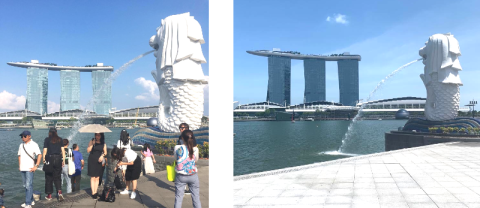For a brief while there, hand sanitiser became a more desirable type of alcohol than red burgundy in Asia (the main picture shows free hand sanitiser on offer at my local mall). Yet as COVID-19 is now spreading rapidly across the west, the degree of panic in the east shows signs of stabilisation as the number of new cases slows.
Even so, the measures being taken to handle the outbreak are still having a serious impact on most types of business, wine included. There has been no shortage of reports on how the crisis is unfolding, and this article will summarise the most useful, as well as adding some personal observations.
Viral coverage
UK publication The Drinks Business is keeping track on how the wine trade around the world has been impacted, covering the quarantine taking place all across Italy and in the Rioja region of Spain, and detailing the large-scale events that have been cancelled or postponed. In China, Vino Joy News reports that trade activity planned by Wines of Chile and Wines of Australia will no longer take place as planned – although they also report that some opportunistic online wine auctioneers have apparently benefited from the downturn in offline gatherings.
Technology played a similar role in the London wine trade, facilitating several video-conference tastings necessitated by travel restrictions, as Jancis reported in our weekly newsletter, while Wine-Searcher reported on a virtual tasting organised by a Chinese retailer, attended by wine drinkers in the comfort of their own home via WeChat.
The ramifications for the wine trade across the region are expected to be bleak. A Wine Intelligence report quotes estimates of a 20% reduction in volume for wine consumption in China across the whole year. Torres China told Vino Joy News that their February sales were 85% below target and that they are projecting a 60% shortfall in March.
In Hong Kong, international visitor numbers have apparently dropped from as high as 250,000 per day to as few as 3,000, as anyone who has been through the ghost-town airport recently can attest, while hotel occupancy in the city is as low as 10%. Singapore is noticeably quieter too: the Merlion statue, a downtown tourism focal point, was deserted on 22 February (right-hand picture) as compared with mid August (left-hand picture).
Even so, the Singapore numbers seem to be less depressed (and depressing) than those reported in Hong Kong and China. One local restaurateur reported a decline of around 33% across his estate, principally caused by Chinese consumers who are especially wary of venturing out. This is consistent with the drop in retail sales reported at Changi Airport, where Chinese customers account for 11% of travellers but 33% of all sales.
As a Singapore resident, I can report that it still feels much like business as usual, just with added hand sanitiser and face masks. The recent launch of Nyetimber’s prestige cuvée 1086 went ahead as planned, albeit with fewer-than-expected attendees. A Ch d’Yquem vertical tasting and dinner at Daniel Boulud’s bistro was well attended, despite the last-minute absence of deputy director Jean-Philippe Lemoine (the rest of us soldiered on, as pictured above).
Wearing my other hat as the resident MW at the new Asian outpost of 67 Pall Mall, I can report that the weekly site visits for prospective members show no signs of slowdown, with capacity crowds of around 80 guests attending every Wednesday evening.
While nobody is ready to predict the end of the outbreak just yet, there is a definite sense that infection rates are easing among the countries that experienced the first cases. As a small and well-organised city state, Singapore was able to control the outbreak quite successfully (being singled out for praise by WHO in the process), and now has a per capita rate lower than Italy, Sweden and Norway, for example. Many malls, office buildings and temples take the temperatures and contact details of all visitors to prevent further spread, and with a generally obedient populace, government guidelines are closely adhered to.
However, because Europe and the US have experienced the outbreak more recently than Asia, there seems to be a lingering distrust of travelling east – from my own parents among others – even though statistically speaking, visiting Singapore is less risky than visiting Switzerland.
Even the most optimistic forecasts predict several more months of disruption before normal order is restored. Until that happens, and socialising returns to normal levels, the wine industry will remain under pressure. For some operators, the dramatic slowdown in trade combined with low margins and high rents will result in irreparable damage. It’s certainly the worst possible timing considering the existing economic slowdown in these parts.
However, it is important to try and think positive. This disease, serious though it may be, shouldn't affect wine consumption in the longer term, in Asia or anywhere. There may be short-term pain but panic will only make things worse, and by acting with appropriate caution and diligence now, it shouldn't be too long before we can wash our hands of the matter.
















